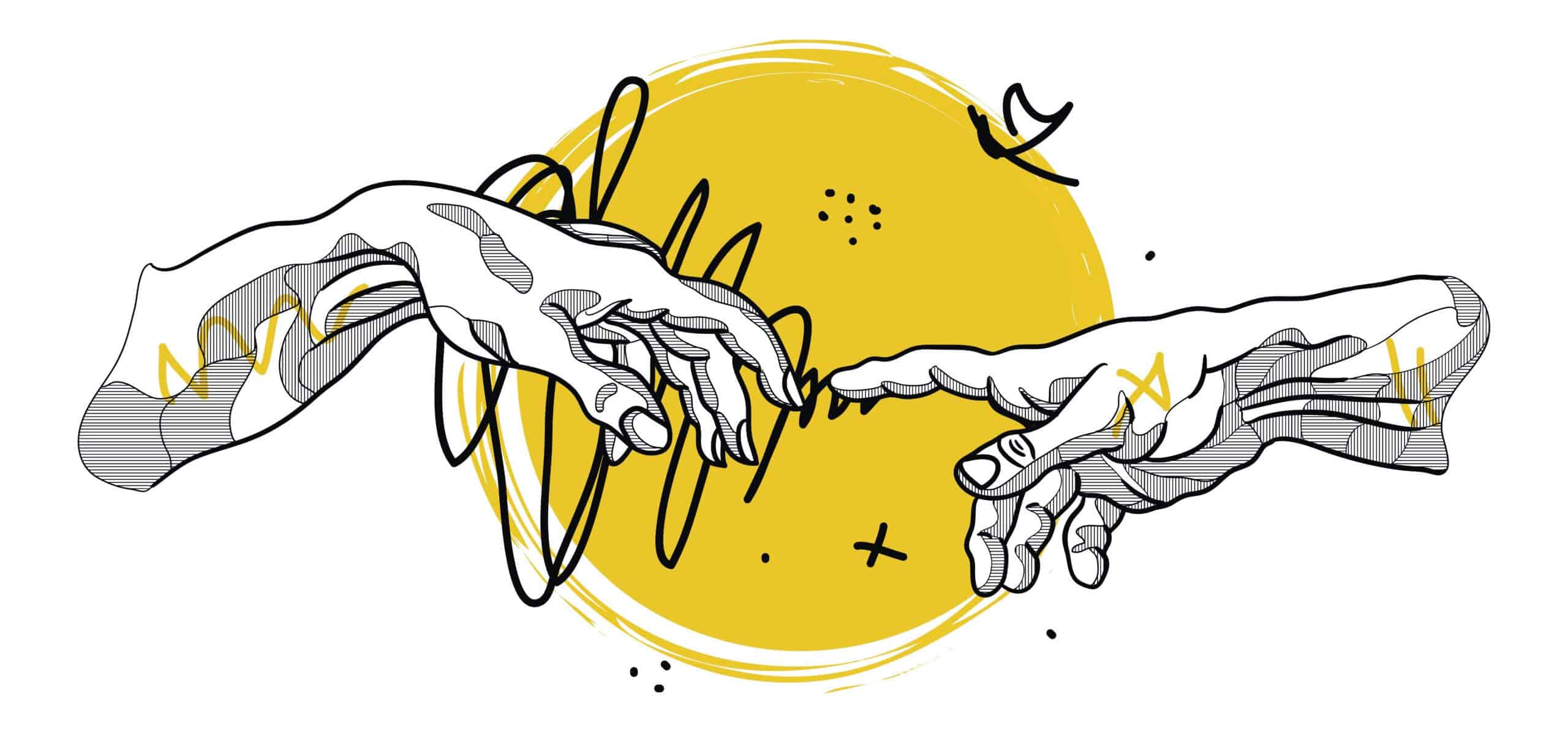On-page SEO is the process of optimizing a single page on your website. This is helping your website to rank on Google. If you are not optimising your website, using all SEO tactics, very likely that your website will not bring significant readership which means that if you are creating the content that none will see, you are not existing.
Google Is Watching You
On-page SEO is the process of optimizing a single page on your website. This is helping your website to rank on Google. If you are not optimising your website, using all SEO tactics, very likely that your website will not bring significant readership which means that if you are creating the content that none will see, you are not existing.
In this article we are going to cover all On-page SEO techniques for 2021. You will finally understand everything related to SEO and would be able to start implementing it in your website.
On-page SEO includes: keywords, URL, page title, meta-description, content, H2 tags, media, links, mobile friendly optimisation. I know, it sounds big. This can be understood as your internal, self-development approach.
If you imagine that your website is your house, than on-page SEO will be your interior. Since you are going to live there, you want to make everything perfect and to take care nothing is missing. This can also be applied to your blog.
Always be sure that all of your articles are connected, that your links are nice and short, that you content is relevant and your key phrase specific enough to be ranked.
The best trend for 2021 when it comes to key phrase is make it simple, make it organic.
Before we start with practical things, I want to emphasise one- Never forget that Google is the God. Whatever you are doing, whatever you are writing, always be sure that Google is watching you.
New Trends In 2021
It seems that 2020 didn’t left consequences only on human beings, than also on the whole internet community. The main lesson that we all learned last year is that we are all connected and the life without each other is not possible anymore.
So, the Google did the same. They want to incorporate solidarity in our web existence.
This practically means that we should make more partnerships, to increase the value of our business by connecting with each other, helping to other side to get more readers and another way around.
Collaboration and partnerships are becoming the main SEO techniques. People are the biggest value and without people, Google would be just one lonely God on the web.
Links
There are two kinds of links that play a major part in SEO: backlinks and internal links.
Internal links are links included in your own content leading to other pages in your website. External links or backlinks are links included in your own content leading to other pages in another website.
Best practices
Add 2-3 internal links in every article. It’s important to use one in the first paragraph.
Use keywords with search potential as anchor text, not just the URL or ‘click here’.
Never link the random phrase. If you are writing about SEO, as I am doing now, you will link the phrase Google techniques for 2021, or something related to the topic, but please, never link to phrases such as: click here, read more here, discover here, find here, all all things that are finishing with here.
The most important part of internal linking is to make sure each that each link is used in a natural, relevant way.
This means that you really need to read the content carefully and to insert links that are actually talking about the keyphrase you are writing about.
Always double check the content before you place the link.
Keyword research
Before you start writing any piece of content, including title, meta description, image name, you should know which problem you’re trying to solve.
Always ask Google what are people researching about your topic. Which questions are they asking, what are offered answered, what will be the main perspective to shape your topic from the side of readers.
Remember, you are writing for readers, otherwise, no one will care for your opinion. That means to make the topic relevant. Offer useful information that will actually help people to learn more about the topic and to understand it.
The web marketing is very simple structured- Give as much as you can and people will give it back to you. Being a webmaster means being a really good person.
Go into the details and never make general phrases that mean nothing. Go straight to the topic and develop it. Here are tips on how to start building your topic and how to find your keyphrase.
You can research your key word using plenty of tools, but the most popular ones are offered by Google:
- Search
- Analytics
- Webmaster Tools
- AdWords
- Trends etc.
One main keyword
The article should be optimised around one keyword, and all the connected keywords variations, synonyms, which will be connected to each other.
The usage of keywords variation is less riskier because of ‘over-optimization’ penalties.
It will help you to cover as much of the semantic field as possible. Never link the main keyphrase and try not to repeat it too much, Google doesn’t like it and your article can easily be banned.
Seo Friendly URL
This is very simple. There is only one rule: Avoid ugly URLs like mysite.com/blog/archive/5/3/2019/this-is-an-example–2019/page/12.
Instead, make your URL short and keyword rich like mysite.com/this-is-an-example–2019. Shorter URLs rank better in Google, and people like them more.
In writing please include the following requirements:
- keep URL length under 100 characters
- include the super-keyword
- avoid words without search potential (info, tag, article etc.)
- avoid special characters (except for languages such as Russian, Chinese etc.).
Page title
When it comes to the page title, keywords should be unique, compelling and closer to the beginning with the length between 50 and 60 characters.
Try avoiding words without a search potential and special character, except for languages when it is needed such as Chinese, Japanese, Russian.
Meta description
Meta descriptions are small snippets of text that describe a page’s content and are not used by search engines for SEO ranking factor. BUT. . . Its purpose is to explain to search engines what a page is about. It should be written effectively in a way to sell your article and make users to click on it.
The length of meta descriptions should be between 150 and 160 characters, but no more than 160, please. You should include compelling information to make people visit the page.
Content
Yes, the content is still a king and will never be a another way around. If you don’t have good quality content, the bounce rate will show it to you.
If the bounce rate on your website is high, this means you are producing low quality content. Always write about the topic you clearly understand and about which you made a proper research.
Our web is full of useless content and general information, you don’t want to be one of them, right?
Who are your readers?
Never forget for whom and why are you writing. If you don’t have your ideal readers profile and purpose and if you don’t want to take it seriously, than I am sorry to tell you this, but maybe you should consider to change profession.
If you are reading this, it means you still want to keep trying.
One important rule to keep in mind is that a user will spend two or three seconds to decide if they will find answers in your article. The headline is the first thing they will see.
First paragraph is second and only then will they decide whether or not this page is a good fit for their needs.
There are no strict rules of how to write great content, but we can help with some rules.
Write at least 500 words. The first paragraph should be a summary of the article. Place your targeted keywords at the beginning of the text. Begin the content with the text only, and add other media formats such as graphics, pictures, videos later.
Add at least three images and always make relevant title tag and ALT attributes. Add at least one to three backup links from trustful sources.
Paragraphs
Paragraph rules – text should be in only four lines, then move to another paragraph. Divide paragraph with H2 tags or using H3 tags. Try to make space between sentences.
Your H2 tags are your subheadings. These are used throughout the body of your text to divide your content into logical, scannable blocks. Unlike H1’s, which are only used once per page, you can use multiple H2 tags throughout your page.
But remember, H2 tags still have to obey content laws: include the keyword only where it’s relevant and natural, and don’t include it in every H2 subhead.
As a rule of thumb, try to include your target keyword in ever 3-4 subheadings.
Media
All pages should have at least one images as they are important in search ranking. They have an opportunity to show up in an image search, but they contribute to regular SEO as well.
How to do image optimisation:
- Before uploading image to website, filename should closely match the URL suffix
- separate keywords inside filename with dashes (-)
- use only lowercase characters in image filename
- don’t use special characters in filename
- make sure image file size is as small as possible (use gif, png, jpg appropriately)
- provide an ALT attribute – alternative text displayed by the browser when the image cannot be loaded; it should closely match the meta description
- provide a TITLE attribute – the name of the image, it appears as a tooltip when holding the mouse over the image; it should closely match the page’s <title> tag
Mobile friendly
Making sure your site is optimised for mobile is no longer a choice, it’s a necessity.If you don’t do they, bounce rate will show it immediately.
Mobile-first indexing means that Google will mostly use the mobile version of your pages for indexing and ranking. This Google’s Mobile-Friendly Test can help you with that.
I hope this article was useful for you. Next week we are going to talk about bounce rate and will go deeper into the topic. In the meantime, read about internet marketing.
Support us!
All your donations will be used to pay the magazine’s journalists and to support the ongoing costs of maintaining the site.
Share this post
Interested in co-operating with us?
We are open to co-operation from writers and businesses alike. You can reach us on our email at [email protected]/[email protected] and we will get back to you as quick as we can.










